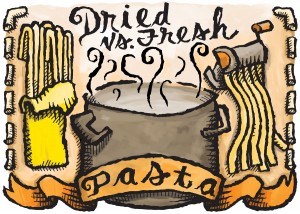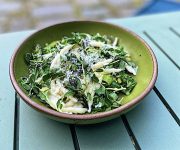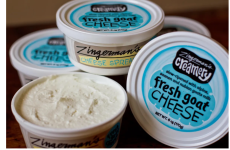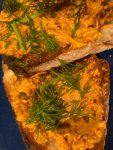Is Fresh Pasta Better Than Dried?
Fresh or dried, which is better? Is America concerned about this? Are you talking about it at dinner, arguing one for one pasta style over the other? Frankly, I don’t know if this is a debate or not. If it is I’m sure it ranks very low on the scale of disputes, somewhere far below the controversy on serving water with or without ice. It does, however, come up with friends and colleagues from time to time. And almost always I find that folks assume fresh pasta is better. That if you had the time and wherewithal you should use fresh pasta over dried all the time. Maybe it’s because it’s more work to make (if you make the pasta at home). Maybe it’s because fresh pasta is more fragile, more perishable, and seems more precious. Maybe it’s because dried seems more industrial, more like a commodity and can sell for so much less.
Whatever the story behind the myth, it’s not true. Fresh pasta is not better than dried. It’s just different. There are many times when dried pasta is preferable. Probably the most concise way to think of it is like this: use dried pasta when you want to enjoy noodles with a lot of texture and flavor; use fresh when you want a softer, subtler dish.
The two styles are made very differently, hence the different results and different uses in the kitchen. Traditional dried pasta is made by extruding durum semolina dough through bronze dies. It’s dried at relatively low temperatures for a couple days. The bronze-die extrusion leaves the pasta with a rough texture. You can feel it in your mouth and the sauce really grips to it. The slow drying ferments the flour just a bit. It transforms the dough from tasting like raw flour to something more like bread. In contrast, fresh pasta is usually rolled and cut and there is no fermentation. The texture is much softer, smoother and the flavor is much less intense, simpler, more like the flour it was made from.
It’s important to note I’m not talking about any old dried pasta here. There are only a few companies that do dried pasta right. (My two favorites are Martelli and Rustichella.) Most dried pasta is industrially made with exasperating shortcuts that leave it tasting unexceptional. In particular, they employ hot, short drying times so there is no transformation of the dough’s flavor. It tastes like flour. Worse, it’s flour with a burnt edge to the flavor. The extra hot ovens singe the surface in a way Martelli and Rustichella’s do not. To see what I mean taste a piece of uncooked commercially made DeCecco pasta (one of the better industrial companies) and Martelli spaghetti next to each other. The flavor is remarkably different.
At home I almost exclusively use dried pasta. The dishes I like to cook are robust. Spaghetti with sardines, arugula and lemon. Penne with black pepper, pecorino and sausage. And my regular favorite: Il Mongetto’s plain tomato sauce with a tin of Ortiz tuna tipped in, oil and all.





Zingerman’s Art for Sale